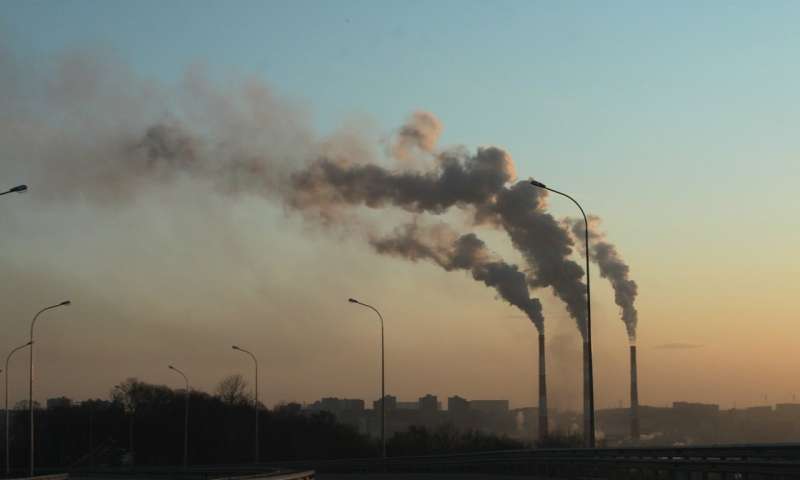City-level action is the right way to tackle emissions, study shows

Countries seeking to meet Paris Agreement targets on CO2 emissions must get a grip on the amount of pollution produced at city level, according to researchers at the University of East Anglia (UEA).
In a new study, published in Science Advances, the researchers set out a framework for gathering and analysing local information about how cities contribute to pollution levels, and show how these insights could be used to target climate mitigation initiatives most effectively.
Using China as a model, the team has compared emissions data from 180 cities across the country, looking at the industrial make-up of each city, its socioeconomic profile, and the types of energy produced and consumed.
The researchers used the data to classify cities according to different levels of industrial development and worked out the potential for emission reduction amongst the different groups. Energy-producing cities, and cities with lots of manufacturing, have higher CO2 outputs than high-tech and service-based cities.
By modelling a range of different economic development scenarios, the researchers showed how policy-makers could understand which cities could make the biggest difference in terms of reducing emissions, and could make meaningful decisions about where to target reduction initiatives within a city.
For example, by identifying the worst factories or plants for emissions—the super-polluting units within an economic area—it would be possible to improve them with new, cleaner technology, cutting emissions without major economic disruption.
Prof Dabo Guan, professor of climate change economics at UEA, led the research, along with Dr. Yuli Shan from UEA's School of International Development.
Prof Guan said: "Everything practical that you would need to do to reduce emissions happens at a city level.
"You can demand that the country cuts CO2 production by 60 per cent, but to do this successfully you need to have a good idea of how to cut pollution at a local level without devastating local economies. Rather than creating low-carbon pathways at a national level, we need a pathway for each city.
"Our study shows that by targeting the top 5 per cent of polluters in each city, it would be possible to reduce national emissions by 30 per cent. That would be achievable without creating conflict between the need for economic growth and socioeconomic stability, and environmental protection."
The data used in the study was gathered by a team of researchers working on the Chinese Emissions Accounts and Datasets programme (CEADS). Over the past three years, experts from the UK, USA and China have worked with local researchers to build increasingly sophisticated datasets on Chinese emissions.
Prof Guan said: "The data we have published is not necessarily accurate in absolute terms and requires further verification by the public and local authorities, but it provides a benchmark on which local governments can build and use in their decision-making as they plan low carbon pathways to include actions that are both practical and feasible."
China was used as the model for the research because it is one of the largest developing countries in the world, tackling some of the biggest pollution challenges. The model could also work successfully for other countries, however, and researchers are already considering how to assemble data for developing countries in Southeast Asia such as Vietnam, Thailand and Laos.
More information: Y. Shan el al., "City-level climate change mitigation in China," Science Advances (2018). advances.sciencemag.org/content/4/6/eaaq0390
Journal information: Science Advances
Provided by University of East Anglia


















